P P ‘Clem’ Clements enlisted into the Leicestershire Regiment in 1928 and saw service with the 2nd Bn in Germany and Catterick. He was drafted to the 1st Bn in India in September 1930 and served at Ambala, Multan, Jubalpore and Razmak, and the hill stations of Kasauli and Dalhousie. He was extremely fit and played rugby and soccer for the Bn.
He returned to England as a Sgt in 1939 under the Hore Belisha training scheme and was an instructor for a short time at Ripon. He was then posted back to the Regiment when the 7th and 8th Bns were being raised in April 1940 but instead volunteered for special service.
Told that an entry requirement was the ability to fit through a 2 foot diameter hole, he suspected that he was headed for the commandos and submarine hatches. He was surprised to find himself in No 2 (Parachute) Commando which became the first SAS unit, 11 SAS, and to discover that the hole was in fact in the floor of a Whitley bomber!
In February 1941, X Troop 11 SAS carried out the Allies’ first airborne raid, Operation Colossus against the Tragino aqueduct in southern Italy. The drop into mountainous terrain was not straightforward. Clements, the senior non-commissioned officer of the group was first man out of his ‘plane. He launched himself through the hole in the floor of the aircraft as the ‘Green Light’ came on only to be grabbed by his colleagues as the pilot switched back to the Red Light and went round for another attempt. For several minutes, Clements hung through the hole supported by his comrades as mountains swept by beneath his feet. The drop was successfully made at the second attempt and the aqueduct blown up.
The raiders then began to make their way to the coast and a rendezvous with the submarine HMS Triumph but were captured en route. For his part in the raid Clements was awarded the Military Medal.
The troop was eventually imprisoned in Campo di Concentramento 78 at Sulmona. There, Clements took responsibility for communications between the camp and the War Office and other secret activities. In September 1943, as the German Army arrived at the camp to transport its inmates back to Germany, Clements and another NCO made their escape.
In difficult mountainous terrain, poor weather and with scant rations they covered over a hundred miles before crossing the allied lines some 22 days later. Sergeant Clements became one of the very few men to win a medal in a POW camp when, for his actions there and his subsequent escape, he was awarded the Distinguished Conduct Medal.
On his return to the UK, Clements was commissioned into the 12th Battalion of the Parachute Regiment on 19 August 1944 and attended a refresher parachute training course (no 134) which ran at RAF Ringway in September 1944.
The Battalion was dispatched from England during Christmas 1944 to help counter the German offensive in the Ardennes. On 5 January 1945, Clements’ platoon was ordered to occupy a hill dominating the town of Bure in Belgium. After some hours of fighting, enemy armour, including a Tiger tank began to engage the position. Clements called down artillery fire from an exposed position but found his troops were all but surrounded. He gave orders for them to withdraw but during the first bound was wounded in the stomach. Although he could not move himself, he continued to command and gave the necessary orders for the remainder to withdraw.
Without food, and in the bitterly cold snow of the Ardennes, he successfully extracted his platoon and continued to engage the enemy with artillery until his own evacuation could be arranged. He was by now severely wounded in the arm, leg and stomach and both of the bearers carrying his stretcher were killed. For his outstanding leadership and determination he was awarded the Military Cross.
His wounds (which he only survived because of his exceptional fitness) meant that he had to leave the Army after his recovery and he then worked until his retirement as a Civil Servant in the Ministry of Defence. Clem Clements was a modest man and was embarrassed to be regarded as one of the most highly decorated members of the airborne forces he helped found.
All who served with him paid tribute to his courage, determination and inspirational leadership. Younger men on the parachute raid, and later in the POW Camp, came to value his advice, assistance and irrepressible humour. All agree that he was indeed ‘a man among men’ and one of the great fighting soldiers of the British Army.
By David Clements
Read More
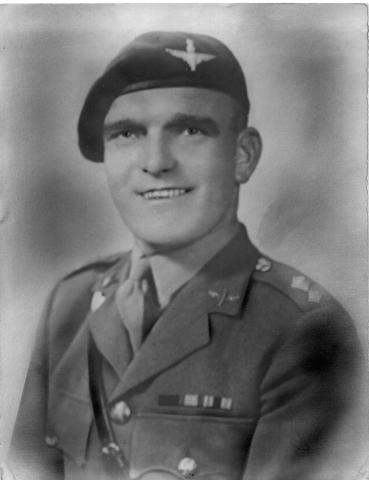
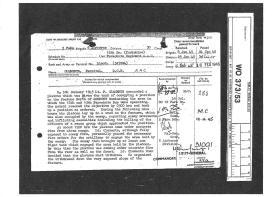
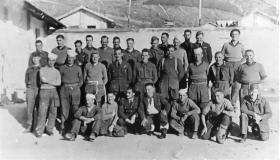
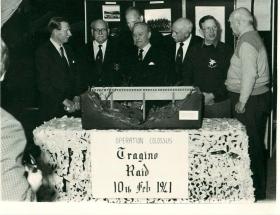
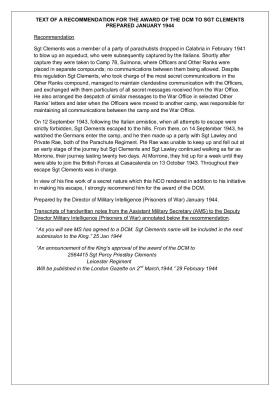
Latest Comments
There are currently no comments for this content.
Add Comment
In order to add comments you must be registered with ParaData.
If you are currently a ParaData member please login.
If you are not currently a ParaData member but wish to get involved please register.